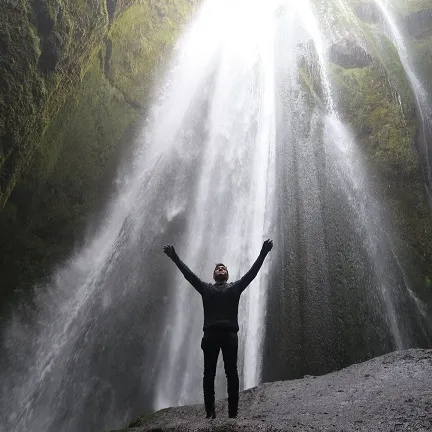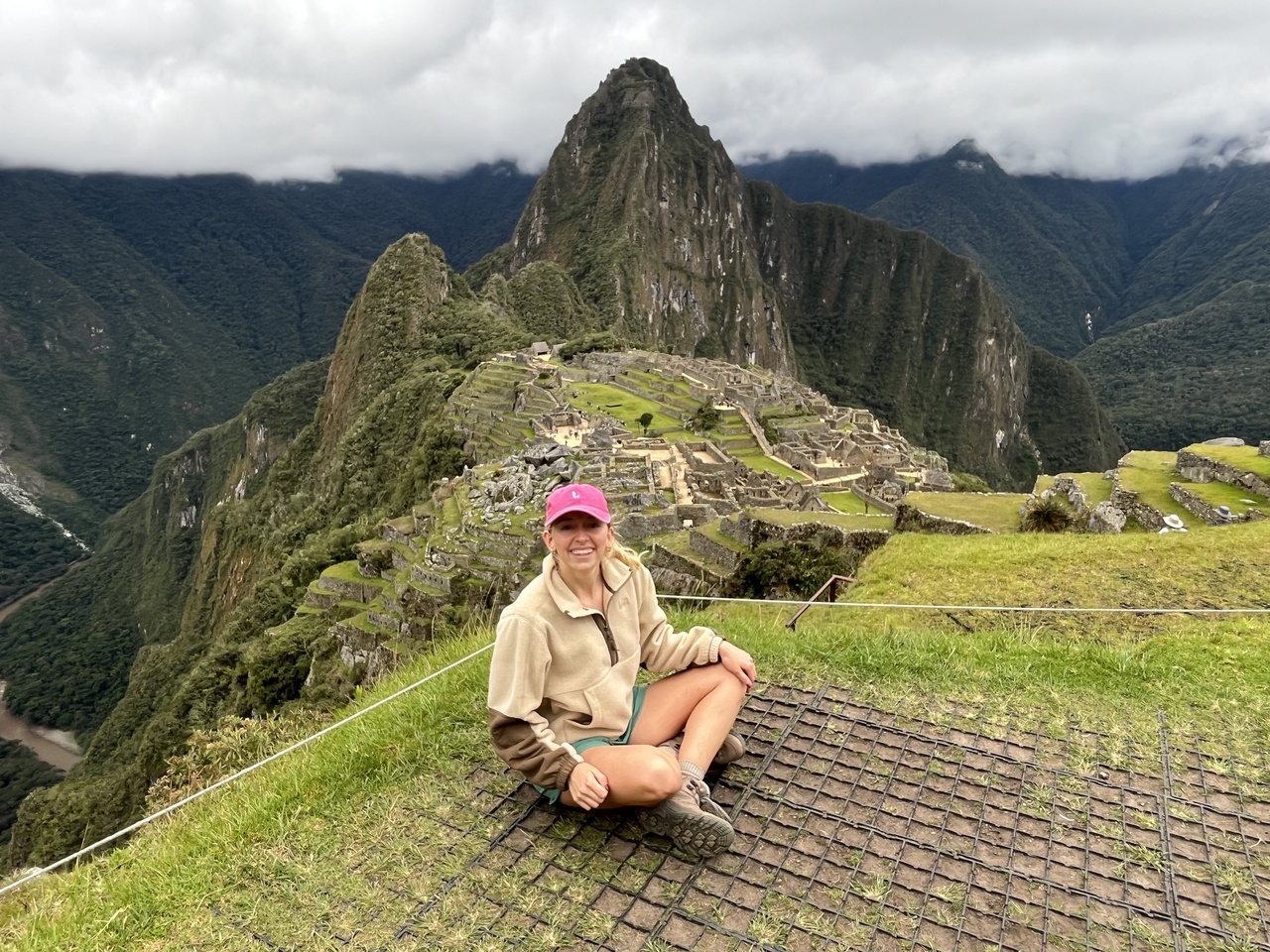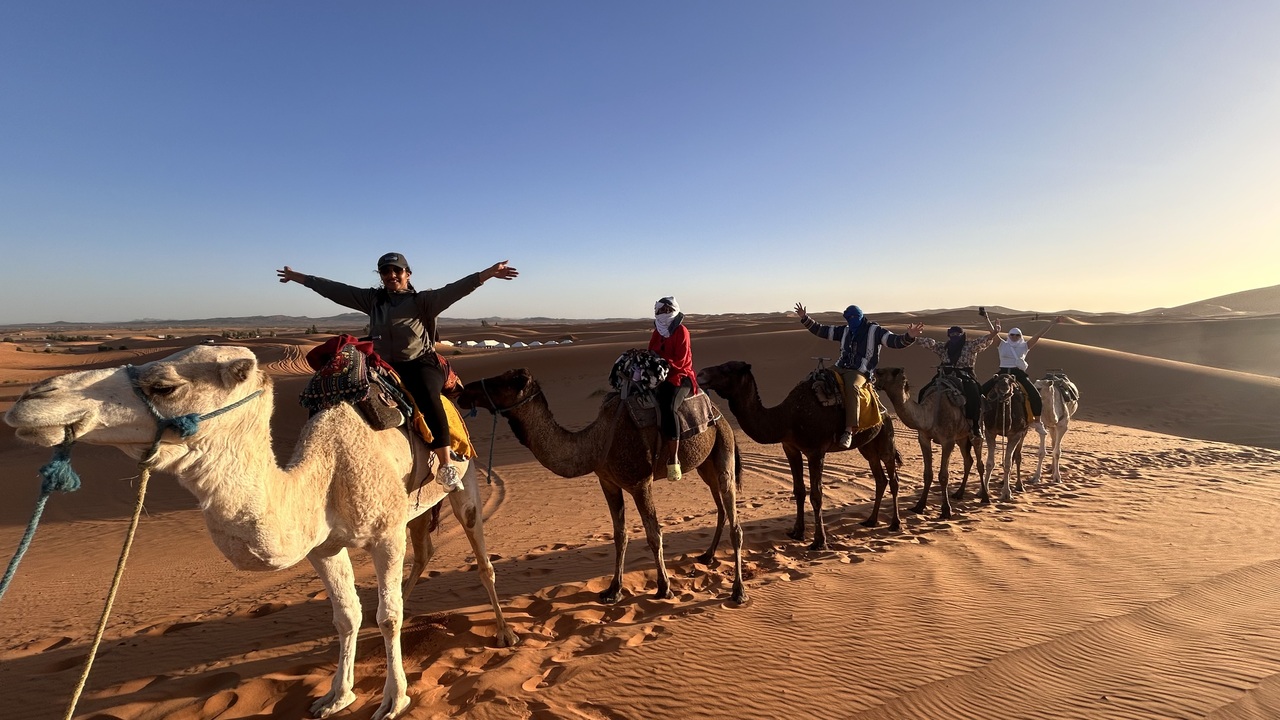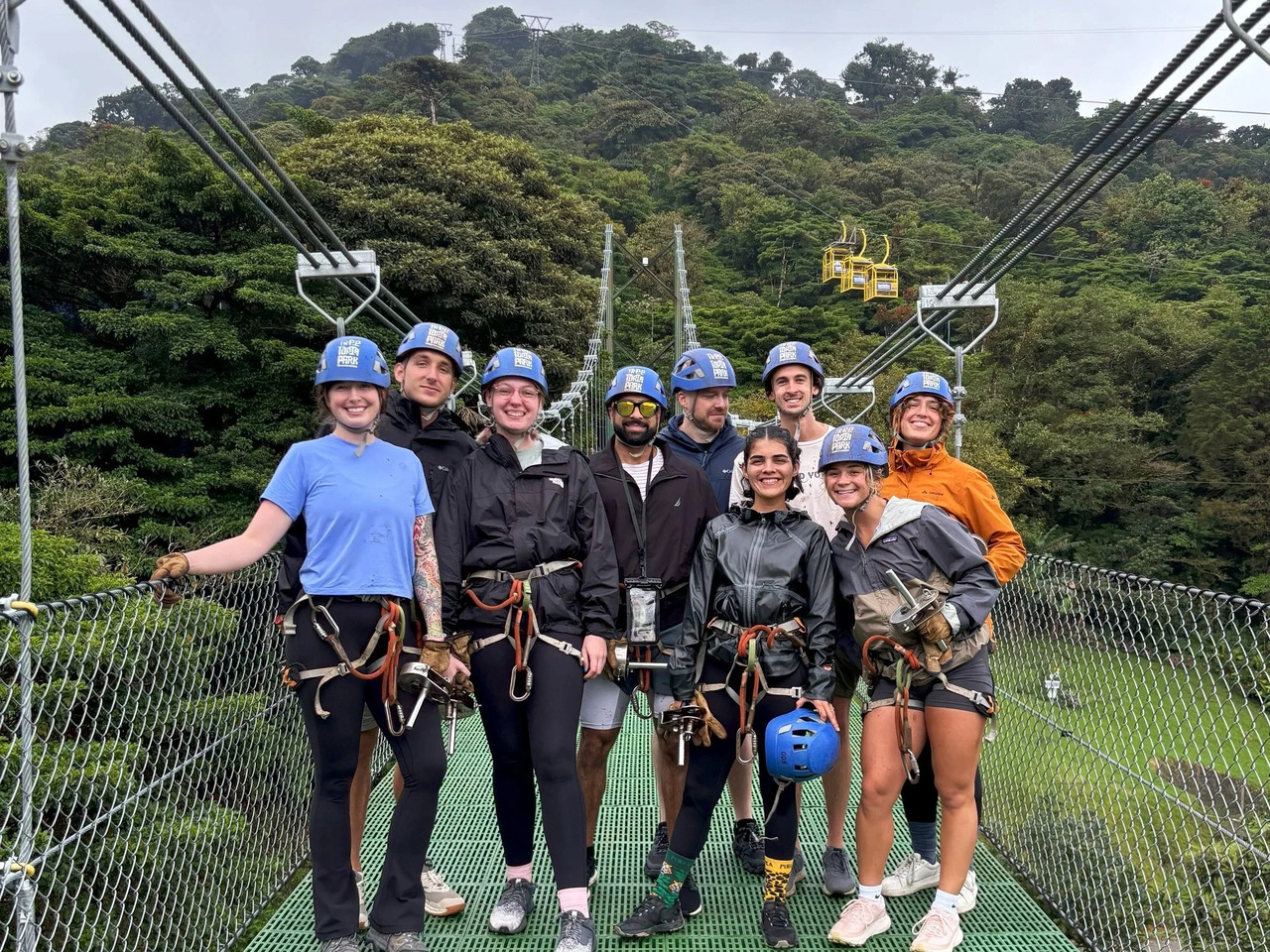After sharing my stories of traveling through Morocco with Under30Experiences a few years ago, everyone kept asking me if I had visited Chefchaouen. Honestly, I knew nothing about this city that everyone was talking about. So naturally, I did some research and quickly found out why it is a top tourist destination in Morocco. Looking at all the pictures of the bright blue painted buildings had me yearning to return to Morocco for a visit.

I got that opportunity in 2024 when I traveled again on an 11-day Morocco trip offered by Under30Experiences and its sister brand, Over30Experiences.
Here’s what this guide to visiting Chefchaouen covers:
- Why is Chefchaouen painted blue?
- How do you get to Chefchaouen?
- The best time to visit Chefchaouen.
- Tops things to do in Chefchaouen.
- Tips for visiting Chefchaouen.
Why is Chefchaouen Painted Blue?
One of the first things you’ll notice upon arriving at Chefchaouen is that everything suddenly begins to be painted blue—blue buildings, roadside benches, street posts, sidewalks, flower pots, random walls, just about everything! It’s kind of like your welcoming party after a long drive.
Curious how everything fits together? See how our Morocco journey unfolded day by day in this detailed recap.

But why is everything blue in Chefchaouen? Well, it’s unknown, but you may be told a variety of reasons during your visit. Among them are:
To honor the traditions and customs of the Jewish culture
In Jewish beliefs, the color blue represents the sky, which reminds people of heaven and God. The early Jewish residents of Chefchaouen introduced the practice of painting the walls blue in keeping with their religious and cultural practices. Some elderly residents will tell you that only the Jewish parts of the city were originally blue, while the rest of the medina was painted white.
To keep the building cool
Being located in the Rif mountains, Chefchaouen can get pretty hot during the summer months. Some residents will tell you that the walls have been painted blue to help keep the buildings cool.
The blue color represents the color of water
This story of the blue representing water has two identities. One is that the blue symbolizes the Mediterranean Sea. The other one is that the blue symbolizes the importance of the Ras el-Maa waterfall, where the city’s inhabitants get their drinking water.
Social Media and Tourism
The one that I like the most was told to us by our local guide. Though he believes that the early residents painted the walls blue for religious and environmental reasons, tourism has led to the whole city being practically painted blue. Many artists and performers have visited the town to create artwork and to shoot films, and of course, the impact of social media on today’s tourism industry has led the current residents to embrace the color blue because it brings revenue into the city.
Further reading: Morocco's Marvels, Surprises at every turn for a solo female traveler perspective on Morocco.
How To Get To Chefchaouen?
Maybe the easiest way to get to Chefchaouen is to join a group tour with Under30Experiences. This allows you to travel stress-free with us handling all the logistics….
But since we understand there are plenty of independent travelers out there, visiting Chefchaouen is best if you are already touring the northern region of Morocco. The most common options are coming from Tangier or Fes.
Visiting Chefchaouen from Tangier
Tangier is located on the northern tip of Morocco. Its airport receives both international and domestic flights and is the closest airport to Chefchaouen.
CTM, one of Morocco’s leading transport companies, operates a few daily buses with a journey time of approximately 2 hours and 30 minutes. Alternatively, you can take a private taxi or rent a car and self-drive the route.
Visiting Chefchaouen from Fes
This is a more common route because Fes is one of Morocco's top destinations. After all, it is home to the largest medina in Morocco. So it is quite common for people to add a day trip to Chefchaouen after visiting Fes.
CTM also operates several daily buses though the journey time is approximately 4 hours and 30 minutes. This route is a little more mountainous. If you easily get motion sick, you may want to think this through. Alternatively, you can rent a car and self-drive, which will allow you to stop more often and take in the scenic views along the way, or stop off to visit the ancient Roman ruins of Volubilis.

Best Time To Visit Chefchaouen
The best time to visit Chefchaouen is in the Spring and Fall months. During March through May, temperatures range from the low 60s°F (15-18°C) to the low 80s°F (25-28°C). In the fall months, September - early November, temperatures range from the mid-60s°F (17-20°C) to low 80s°F (25-28°C). These seasons offer the most pleasant temperatures, clear skies, and lower humidity. The weather during these months of the year is perfect for outdoor activities such as hiking.
Summer temperatures can be warm, but more importantly, the city can get crowded. So if you want to experience the city more intimately, I suggest staying away from July and August.
If you don’t mind some cooler weather, with temperatures ranging from the low 40s Fahrenheit (4-6 Celsius) to low 60s Fahrenheit (15-18 Celsius), you can choose to visit Chefchaouen during the winter months. Be sure to pack some warmer outfits and you may also get to see the surrounding peaks of the Rif mountains covered in snow. But best of all, you will get off-season prices at accommodations which is great if you are a budget traveler.
Top Things To Do in Chefchaouen
Chefchaouen is a small city, and though it can easily be visited in one day, it is worth staying for two nights, allowing you to soak in the atmosphere and culture of this mountain town. Plus, you might as well stay longer due to its remote location since you put in the effort to get there. So, what should you do while in Chefchaouen?
Wander the Chefchaouen Medina
This is where the houses are painted blue and is what attracts all the visitors. As mentioned above, the shades of blue will make your photos look amazing. As you walk through the small alleyways, taking in the sights and sounds, you can navigate in and out of little nooks and crannies, providing a calming atmosphere. Shop vendors are not as aggressive as other bigger towns, and you’ll find yourself conversing with the vendors who explain their arts and crafts to you.
Throughout the medina, you will see plenty of areas for photo opportunities. Take your time and find the best locations for your perfect spot. Make mental notes of these locations, or mark them on Google Maps, and then return at other times of the day when the lighting is better.
If photography is not your thing, you will still enjoy a wander through the medina, for it can be calming and peaceful, especially when you find the less crowded areas, which tend to be closer to the main square.
Watch the Sunset from the Spanish Mosque
We did this on the Over30Experiences Morocco trip I joined, and it was one of the highlights for most travelers. Yes, you will have to walk uphill, but the hike is not strenuous, and you can take your time. You should head up the hill early if you want a good spot. Most people gather in front of the mosque, sitting on the walls or the pavement. However, if you sneak over to the sides or go slightly down the grassy hill, you can watch the sunset without a crowd of tourists standing in front of you.
Visit the Kasbah and the Ethnographic Museum
Located in the area of the main square, this is an easy place to visit but it does come with an entry fee of a few dollars.
The Kasbah, built in 1471, is designed in the Andalusian style, complete with crenelated walls and a watch tower with a prison at the bottom. The top of the watchtower affords the expected panoramic view of the countryside. The museum is small and doesn’t have many English descriptions explaining what you are looking at. There is also a beautiful garden inside the Kasbah that provides a nice atmosphere to sit and relax.

Plaza Uta El-Hammam
As I mentioned above, wandering the streets of the medina can provide some calm and tranquility to your visit, but if you are looking for the opposite, head to the main square: Plaza Uta El-Hammam.
This is where the hustle and bustle of Chefchaouen’s medina takes place. Plenty of restaurants and little cafes surround the main square, offering places to grab a tagine or a coffee. Just grab a seat and observe the everyday happenings.
Located near the Plaza Uta El-Hammam are the Kasbah, which I described above, and the Grand Mosque, which is not open to tourists as it is still an active religious place of worship.
Tips for Visiting Chefchaouen
I wanted to add a few tips to help you enjoy your Chefchaouen experience and make the most of your time in this lovely city.
- Dress appropriately for the culture and the photos
Though Chefchaouen is more touristy than other destinations in Morocco, one should still be mindful that you are visiting Muslim communities. Please dress modestly, and if you want to get a few photos in a cute dress, please bring a scarf or shawl to cover up when you are not posing for those photos.

Remember, everything is painted blue, so if you wear blue, you will fade into the background in your photos. It is recommended to wear a variety of whites and pastels, though I found orange and yellow served as the best contrast to all the blue.
- Keep small currency easily accessible
Though the old medina is filled with shops and restaurants, the alleyways are where the residents live. With the increased tourism, some of these residents have put in the extra effort to improve the aesthetics of their household. These are usually the most famous “insta-worthy” backgrounds for your photos. The owners of these households may ask for a small fee to take a picture. Be courteous and provide a small donation for their effort.

- Don’t forget to bargain
Throughout Morocco, bargaining is a common practice. Always bargain for a price, and don’t take the first offer. During this process, don’t forget to be respectful. Bargaining is part of the culture and can be done playfully. Arguing over a few dollars can lead to unwanted confrontations. If you don’t like the price offered, say your thanks and walk away.
Well, there you have it.
If you can’t tell, I loved my visit to Chefchaouen and would return to this Moroccan city
if the opportunity presented itself. I didn’t have the time to explore the other attractions surrounding the town, such as hiking in Talassemtane National Park, but perhaps you will.




.avif)


























